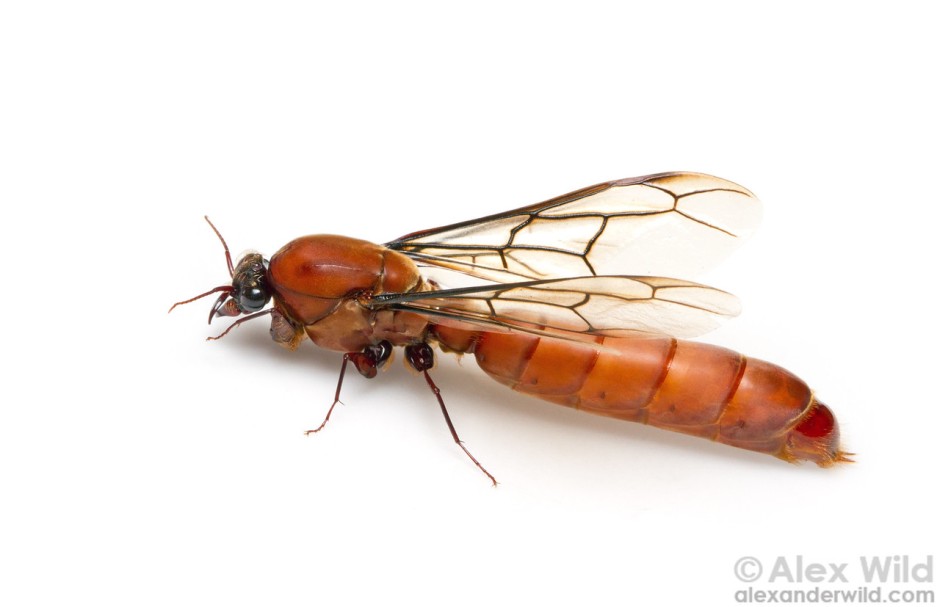The Daily Ant hosts a weekly series, Philosophy Phridays, in which real philosophers share their thoughts at the intersection of ants and philosophy. This is the sixty-second contribution in the series, submitted by Dr. Carrie Jenkins.
Twenty million sisters
A colony of siafu or driver ants can be considered as a superorganism. Or an army, if you like your metaphors military. It typically consists of tens of millions of ants, all siblings (or half-siblings—the queens may take multiple male partners). Whatever its ontological status, a siafu colony is mobile. When food supplies run out in one location, the entire society will march in a vast column, along trenches prepared by soldiers and workers, to find new territory.

Siafu are terrifying, even to much larger creatures, with their Borg-like indifference to their individual fates, their overwhelming numbers, and their incredible co-ordination, the latter facilitated by pheromone-based communications that might as well be magic or telepathy for all we can do to imagine them. Visual appearance is of zero importance to the siafu; they are all sightless.
The soldiers are all female. Huge and fierce, with great slicing pincers to kill prey, they feed their superfamily and defend against aggressors. The workers are all female. Complex and versatile, they can do anything. Scouting and transporting, digging and lifting, building and destroying. The queen is female. Not a leader or ruler—the ants have no need of such things—but a supermother to millions. A pure reproducer.
A few males are born among the sisters, but do not remain in the colony as they have no function there. When sexually mature, however, they are recalled to civilization. They are drawn in by the pheromones of a queen on the move—that is, a queen in search of a mate, looking to set up a new colony.
For a male driver ant to court a queen is dangerous. First, her retinue has to approve of him, and if they don’t, they will kill and eat him. On the other hand, if he is approved, his wings will be torn off. (He might actually help with this amputation.) The wings will then be eaten by workers, he’ll be taken to the queen and mated to her, and then he’ll die.

What is it like to be a driver ant? One might well wonder about their sensory experience, perhaps even more alien to us than that of the (philosophically overworked) bat. But my interest is more strongly drawn to another question: what is gender to these ants?
The answer, I would suggest, is nothing. Sexual reproduction occurs, but there is absolutely no corresponding division of social roles. There is no male-gendered social role at all, in the sense that the entire society—the entire colony—is female. Every social role is performed by female ants. A male is a sperm delivery mechanism (and/or food). That’s it.
I am coming to suspect that human societies, too, would be improved by discarding gender. I don’t mean that we should be like the siafu—function entirely without men (except in the sense that by discarding gender we’d be discarding men and women). What I mean is that, given the vastness and complexity of our social interrelationships, given our potential to operate in emergent patterns and undertake enterprises unimaginable to any one individual, given, in short, the kinds of superorganisms into which humanity is capable of forming itself, gender hinders rather than helps us.
The ants teach us that the mere fact of being a sexually reproductive species delivers no conclusions about how, or even whether, gender should make itself manifest in our societies. In humans, the assignment of a gender limits us to certain modes of social behavior, appearance, and so on. In our current state of evolution and technological development, the vast majority of these limitations are unrelated to reproduction. Many of them—such as the suppression of emotion in boys and ambition in girls—are both individually damaging and socially disadvantageous (not to mention dangerous).
On my optimistic days (there aren’t many of them, but they exist), I suspect humans are in the process of slowly shedding gender. If this is right, the crackdowns in gender policing that we see around us today—while terrifying—may be intensifying precisely because they are extinction bursts.
Feminism itself can be considered as a human superorganism. Indeed, on first hearing the description of a driver ant colony as “twenty million sisters and a few males,” I was prompted to imagine the long, marching ant column as a symbol for feminist resistance through the centuries. Many individual soldiers and workers are lost along the way, but for all that the colony is strong, and headed where it needs to go.
With thanks to the BBC Earth documentary Ant Attack for inspiration!
 Dr. Carrie Jenkins is a writer and philosophy professor based in Vancouver, Canada. She’s the author of What Love Is And What It Could Be, and is now working on a collection of poetic reimaginings of Plato’s Symposium with co-conspirator Dr. Carla Nappi. Her poem “Fourteen” from this project was a finalist for the Malahat Review 2018 Far Horizons Poetry Award.
Dr. Carrie Jenkins is a writer and philosophy professor based in Vancouver, Canada. She’s the author of What Love Is And What It Could Be, and is now working on a collection of poetic reimaginings of Plato’s Symposium with co-conspirator Dr. Carla Nappi. Her poem “Fourteen” from this project was a finalist for the Malahat Review 2018 Far Horizons Poetry Award.